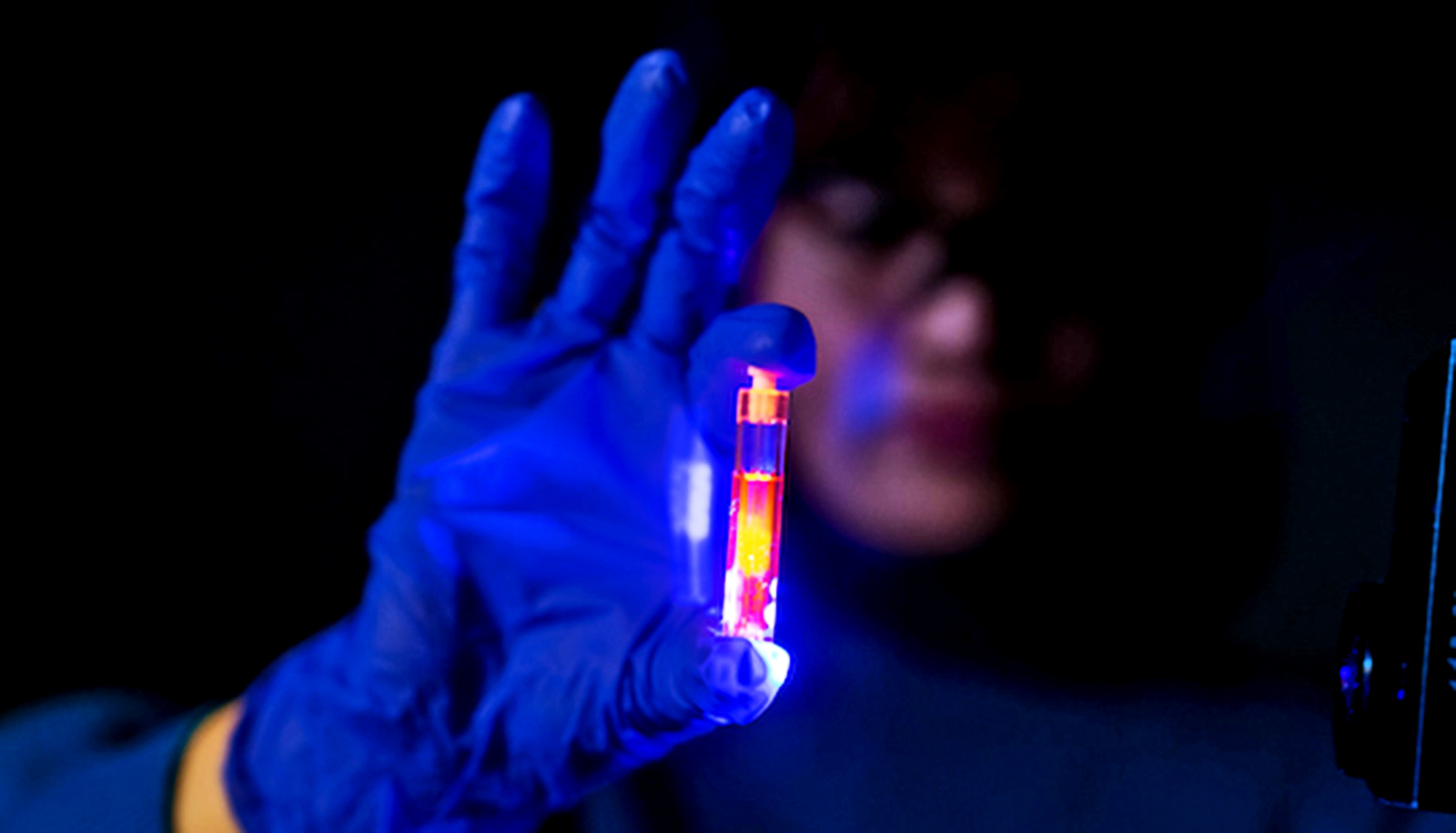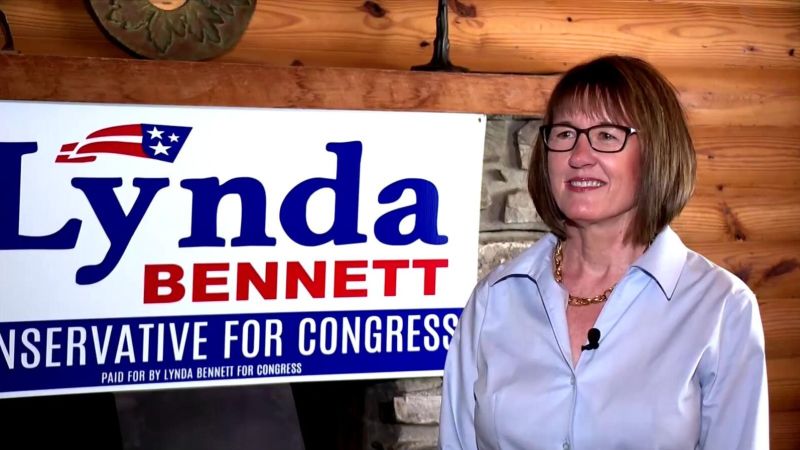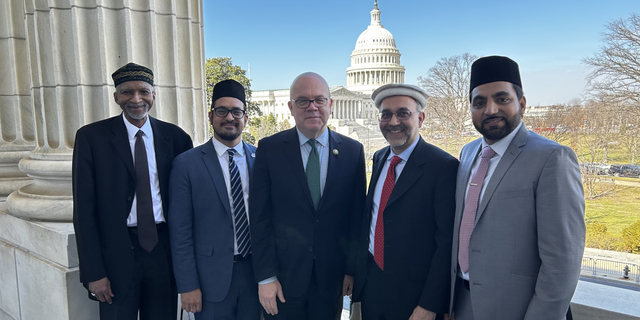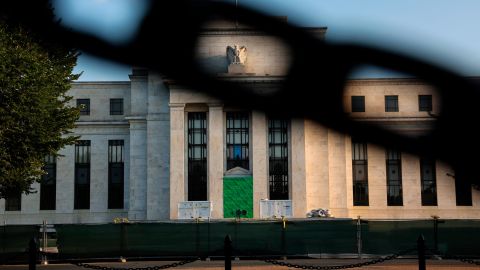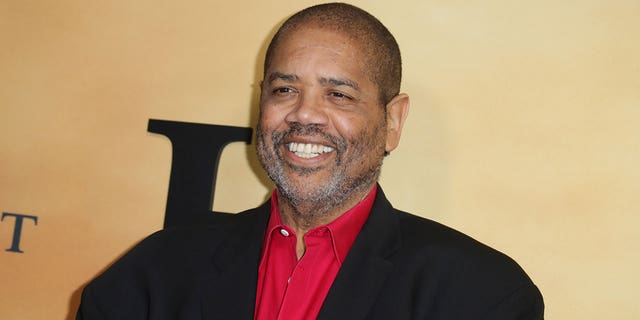This skyscraper boom is happening on the frontlines of the climate crisis. Get the exclusive NordVPN deal here: …
Category: All
Sticky plaque discovery sheds light on Alzheimer’s
Researchers are using fluorescence lifetime to shed new light on a peptide associated with Alzheimer’s disease.
Through a new approach using time-resolved spectroscopy and computational chemistry, the researchers found experimental evidence of an alternative binding site on amyloid-beta aggregates. The finding opens the door to the development of new therapies for Alzheimer’s and other diseases associated with amyloid deposits.
Amyloid plaque deposits in the brain are a main feature of Alzheimer’s. The Centers for Disease Control and Prevention estimates Alzheimer’s will affect nearly 14 million people in the US by 2060.
“Amyloid-beta is a peptide that aggregates in the brains of people that suffer from Alzheimer’s disease, forming these supramolecular nanoscale fibers, or fibrils” says Angel Martí, a professor of chemistry, bioengineering, and materials science and nanoengineering at Rice University and faculty director of the Rice Emerging Scholars Program. “Once they grow sufficiently, these fibrils precipitate and form what we call amyloid plaques.
“Understanding how molecules in general bind to amyloid-beta is particularly important not only for developing drugs that will bind with better affinity to its aggregates, but also for figuring out who the other players are that contribute to cerebral tissue toxicity,” he adds.
The Martí group had previously identified a first binding site for amyloid-beta deposits by figuring out how metallic dye molecules were able to bind to pockets formed by the fibrils. The molecules’ ability to fluoresce, or emit light when excited under a spectroscope, indicated the presence of the binding site.
Time-resolved spectroscopy, which the lab used in its latest discovery, “is an experimental technique that looks at the time that molecules spend in an excited state,” Martí says. “We excite the molecule with light, the molecule absorbs the energy from the light photons and gets to an excited state, a more energetic state.”
This energized state is responsible for the fluorescent glow. “We can measure the time that molecules spend in the excited state, which is called lifetime, and then we use that information to evaluate the binding equilibrium of small molecules to amyloid-beta,” Martí says.
In addition to the second binding site, the lab and collaborators from the University of Miami uncovered that multiple fluorescent dyes not expected to bind to amyloid deposits in fact did.
“These findings are allowing us to create a map of binding sites in amyloid-beta and a record of the amino acid compositions required for the formation of binding pockets in amyloid-beta fibrils,” Martí says.
The fact that time-resolved spectroscopy is sensitive to the environment around the dye molecule enabled Martí to infer the presence of the second binding site.
“When the molecule is free in solution, its fluorescence has a particular lifetime that is due to this environment. However, when the molecule is bound to the amyloid fibers, the microenvironment is different and as a consequence so is the fluorescence lifetime,” he explains. “For the molecule bound to amyloid fibers, we observed two different fluorescence lifetimes.
“The molecule was not binding to a unique site in the amyloid-beta but to two different sites. And that was extremely interesting because our previous studies only indicated one binding site. That happened because we were not able to see all the components with the technologies we were using previously,” he adds.
The discovery prompted more experimentation. “We decided to look into this further using not only the probe we designed, but also other molecules that have been used for decades in inorganic photochemistry,” he says.
“The idea was to find a negative control, a molecule that would not bind to amyloid-beta. But what we discovered was that these molecules that we were not expecting would bind to amyloid-beta at all actually did bind to it with decent affinity.”
The findings will also affect the study of “many diseases associated with other kinds of amyloids: Parkinson’s, amyotrophic lateral sclerosis (ALS), Type 2 diabetes, systemic amyloidosis,” Marti says.
Understanding the binding mechanisms of amyloid proteins is also useful for studying nonpathogenic amyloids and their potential applications in drug development and materials science.
“There are functional amyloids that our body and other organisms produce for different reasons that are not associated with diseases,” Martí says. “There are organisms that produce amyloids that have antibacterial effects. There are organisms that produce amyloids for structural purposes, to create barriers, and others that use amyloids for chemical storage. The study of nonpathogenic amyloids is an emerging area of science, so this is another path our findings can help develop.”
The research appears in Chemical Science.
The National Science Foundation and the family of the late Professor Donald DuPré, a Houston-born Rice alumnus and former professor of chemistry at the University of Louisville, supported the research.
Source: Rice University
Ukraine receiving 60 Bradley fighting vehicles after fleet departs South Carolina
A load of more than 60 Bradley fighting vehicles departed South Carolina for Ukraine last week as part of the latest $2.5 billion package in military aid that the Biden administration announced earlier this month.
The armored vehicle, named after World War II Gen. Omar Bradley, is operated by three crew members and can transport up to seven infantry around the battlefield.
It’s outfitted with a 25mm automatic cannon, as well as a 7.62 Coaxial Machine Gun and an anti-tank missile launcher.

Bradley fighting vehicles being loaded on to the ARC Integrity at the Transportation Core Dock in North Charleston, South Carolina.
(U.S. Transportation Command photo by Oz Suguitan)

Bradley fighting vehicles in South Carolina on Jan. 25 before departing for Ukraine.
(U.S. Transportation Command photo by Oz Suguitan)
“The Bradley is a very powerful vehicle that we are providing to the Ukrainians,” Army Lt. Col. Rebecca D’Angelo, the 841st Transportation Battalion commander who is overseeing the transport, said on Monday.
“This is going to hopefully enhance their capabilities to provide forward advancement in the battlefield and regain lost grounds, by having equipment that matches or exceeds what the Russians have.”
UKRAINE-RUSSIA WAR: GERMANY AGREES TO SEND 2 BATTALIONS OF LEOPARD 2 TANKS AFTER HEAVY PRESSURE
After months of resistance, the Biden administration agreed to send 31 Abrams M1 tanks to Ukraine last week.
Germany, the United Kingdom, and other allied partners also announced they’d be sending their own tanks to help fend off Russia’s invasion.

FILE PHOTO: U.S. Army M1A1 Abrams tank fires during NATO enhanced Forward Presence battle group military exercise Crystal Arrow 2021 in Adazi, Latvia March 26, 2021.
(REUTERS/Ints Kalnins/File Photo)
The U.S. has also sent 90 Stryker combat vehicles, about 1,700 Humvees, dozens of mine-resistant ambush-protected vehicles, and other armored vehicles.
Mykhailo Podolyak, an adviser to Ukrainian President Volodymyr Zelenskyy, renewed calls last week for the U.S. and Germany to send fighter jets to Ukraine.

DONETSK, UKRAINE – JANUARY 07: Ukrainian soldiers work with “pion” artillery in the northern direction of the Donbass frontline as Russia-Ukraine war continues in Donetsk, Ukraine on January 7, 2023.
(Photo by Diego Herrera Carcedo/Anadolu Agency via Getty Images)
CLICK HERE TO GET THE FOX NEWS APP
Russia, meanwhile, is growing increasingly wary of support for Ukraine by the U.S. and Europe.
“There are constant statements from European capitals and Washington that the sending of various weapons systems to Ukraine, including tanks, in no way signifies the involvement of these countries or the alliance in hostilities in Ukraine,” Kremlin spokesperson Dmitry Peskov said last week, according to Reuters.
“We categorically disagree with this, and in Moscow, everything that the alliance and the capitals I mentioned are doing is seen as direct involvement in the conflict.”
Fox News’ Caitlin McFall contributed to this report.
Trump- and Meadows-backed House candidate agrees to plead guilty to accepting illegal campaign contribution
CNN
—
Lynda Bennett, who was backed by then-President Donald Trump and Mark Meadows in her run for the latter’s former House seat in North Carolina, has agreed to plead guilty to accepting an illegal campaign contribution during the 2020 primary election cycle, court filings show.
Bennett accepted an illegal campaign contribution from a family member for $25,000 in 2019, prosecutors said. The family member made the donation in someone else’s name, according to court documents.
“This case involves a technical violation of campaign-finance regulations, based on a loan from a family member,” Kearns Davis, an attorney for Bennett, said in a statement. “Lynda looks forward to putting it behind her.”
While Bennett has already signed a plea agreement, prosecutors said in a status report filed in court, it has not yet been approved by a federal judge. Politico first reported on the agreement.
Bennett was backed by Meadows, then the Trump White House chief of staff, when she ran in a crowded field in 2020 to represent North Carolina’s 11th Congressional District. She advanced to a runoff election, which she lost to Madison Cawthorn.
She also earned former Trump’s endorsement during the primary and runoff elections. Trump encouraged his supporters at the time to vote for Bennett, tweeting: “Please let this serve as my Complete and Total Endorsement of a great fighter and ally in North Carolina, @LyndaBennettNC. She is strong on Crime, Borders, Military, our Great Vets & 2A.”
For the 2020 election cycle, individual campaign contributions were legally limited to $2,800 for the primary and the same amount for the general election, meaning an individual could only donate $5,600 per candidate during an election cycle.
“Contributions from members of the candidate’s family are subject to the same limits that apply to any other individual,” the Federal Election Commission notes on its website, describing campaign finance rules, while “candidate contributions to their own campaigns are not subject to any limits.”
So Expensive Season 6 Marathon
From lotus silk to stone crabs. From eels in Japan to leather in Tuscany. We searched the earth to discover the stories behind …
Religious freedom summit brings together politicians from both sides of aisle for global event
The International Religious Freedom (IRF) Summit officially starts Tuesday in Washington, D.C. The event will have a range of discussions to increase public awareness and political strength for the international religious freedom movement.
The summit kicked off its pre-event activities with Congressional Advocacy Day to bring together lawmakers, ambassadors and survivors of persecution on Monday.
Advocates held more than 200 hundred meetings on Capitol Hill with both Republican and Democrat lawmakers, representing a various range of faith communities.

Rep. Jim McGovern, D-Massachusetts, center, meets with IRF advocates. (IRF Summit)
“We were tapping into the very best of what America has to offer … undeniable religious freedom for everyone, everywhere. We’ve seen that the U.S. has led in many respects on this in the human rights arms of both the Senate and the House in a bipartisan way,” Congressional Advocacy Day Co-chair Amjad Khan told Fox Digital.
FORMER NBA STAR CALLS OUT PERSECUTION AT RELIGIOUS FREEDOM SUMMIT
Rep. Michael McCaul, R-Texas, says he was proud that last year Congress reauthorized the United States Commission on International Religious Freedom to continue to shine a light on persecution around the world.
The commission was created in 1998 under the International Religious Freedom Act to independently assess and confront threats to religious freedom.

Sen. Amy Klobuchar, D-Minn., meets with IRF advocates. (IRF Summit)
The Foreign Affairs Committee chairman is an honorary House congressional co-chair for the summit and told Fox News Digital, “Pope Francis said it best when he said, ‘Religious freedom is a fundamental human right.’ Unfortunately, religious freedoms are increasingly under assault around the world.”
According to a Pew Research Center report, Christianity followed by Islam and Judaism are the three most restricted (persecuted) faiths.
CHRISTIAN PERSECUTION RISING AROUND THE WORLD AMID JIHADISM, TOTALITARIANISM: REPORT
Khan says Congress can do more for religious freedoms by shining a spotlight on prisoners of conscience.

Co-chair of Congressional Advocacy Day Amjad Khan speaks at the Capitol Visitor Center leading up to the International Religious Freedom Summit. (IRF Summit)
“I don’t think that the House has adopted any prisoners of conscience [legislation] yet in the new session. That’s not right. We have so many prisoners of conscience who are suffering right now in jail just for believing in their faith. People need to know their stories, share their stories, because that’s how we can be an advocate for them,” he added.
DOZENS OF CHRISTIAN GRAVES TOPPLED, DEFACED IN HISTORIC JERUSALEM CEMETERY: ‘CLEAR HATE CRIME’
More than 1,000 religious freedom advocates are expected to meet Tuesday in Washington, D.C., for the start of the International Religious Freedom Summit.
New year, new voters in Fed policymaking
Minneapolis
CNN
—
Every year the Federal Reserve’s policymaking committee — aka the officials who decide interest rate moves — gets a slight refresh, with four of the district presidents rotating out as official voting members and four rotating in.
The 2023 rotation brings a more dovish-leaning flock, and it comes during a critical year for the US central bank and the American economy.
This year the Federal Open Market Committee’s new voting members include the newest district president Austan Goolsbee, head of the Chicago Fed; Patrick Harker, of the Philadelphia Fed; Lorie Logan, the Dallas Fed president who started in August 2022; and Neel Kashkari, president of the Minneapolis Fed.
Rotating out as voting members are James Bullard of the St. Louis Fed; Susan Collins of the Boston Fed; Esther George, the Kansas City Fed chief who’s also retiring this month; and Loretta Mester of the Cleveland Fed.
On the whole the FOMC contingent remains largely similar, with eight of the 12 voting members continuing from 2022. The non-voting members still lend their voices and perspectives to the proceedings.

Following a stretch of seven consecutive heavy-handed interest rate hikes last year to battle rising prices, the Fed this year is expected to take a more delicate approach to its blunt monetary policy tools by downshifting on rate increases to an eventual idle.
For new Fed members, be they governors or district presidents, it can take a while to stake out their territory and potentially differ from consensus, said Ellen Meade, a Duke University economics professor who had a 25-year career at the Fed.
History has shown that the Reserve bank presidents typically tend to dissent more than board members; however, even that is a small percentage — about 7% — of votes cast, she added.
“I’m not expecting that we will see a lot of dissent in terms of votes,” she said. “I think where we might see it is how they color the data that they’re seeing.”
“Hawks” and “doves” are commonly used terms to describe Fed members’ differing monetary policy approaches. Doves tend to favor looser monetary policy and issues like low unemployment over low inflation. Hawks, however, favor robust rate hikes and keeping inflation low above all else.
“If I had to qualify them as the hawkish- or dovish-leaning, I would say that last year’s constellation was a reasonably hawkish one, and this year’s constellation is almost certainly not quite as hawkish,” Meade said.
That could change, however, if Federal Reserve Vice Chair Lael Brainard leaves to head President Joe Biden’s economic council. Brainard has been considered as leaning more dovish than Powell and others, so her departure could result in a more hawkish shift in ideology at the top of the Fed.

This particular Fed is obviously not quite as well known, Meade noted, adding that “because we have some new policymakers voting in 2023, we don’t have as much information on their policy inclinations as we did for last year’s voters.”
For any potential split to occur would take some large moves in labor market outcomes – something not seen to this point, Meade said.
“If [moderating inflation] holds up and the labor market softens but doesn’t take a very negative turn, then I think consensus is with us,” she said. “I think the question is what happens if the labor market starts to turn quickly?”
The Fed has indicated, through its economic projections, that it would tolerate unemployment rising to the 4.5% to 4.75% range. But if that grows closer or past 5% and inflation hasn’t moderated as much as desired, “then I think we’re in a place where we’re going to see more signs of disagreement.”
As it stands now, Fed officials have largely been singing from the same songbook, said Claudia Sahm, a former Fed economist and founder of Sahm Consulting.
“Whether it was voting members or non-voting members, you didn’t see a lot of pushback in public,” she said. “There was really a unified force of ‘we’re going to go big, and we’re going to go fast.’”
That unified messaging continued during recent speeches on how the Fed would slow it down, be patient and stay the course, Sahm added.
“The Fed is being very clear across the board, even people you would think of as more ‘dovish,’ that they do not want to let up too soon and get us into a situation where then they have to come back and do even more,” she said. “I don’t think that switching up who’s voting will matter much.”
“They’re all hawks now,” Sahm added.
The Fed also does not want to be in a position where it is lulled into a false sense of security by positive inflation data, she added. Fed Governor Christopher Waller put it bluntly in a speech last week: “We do not want to be head-faked.”
“It’s going to take months and months of good news, and frankly, we’re in store for a bumpy ride this year,” Sahm said. “It’s not like every month is going to be good news on inflation.”




2023 Federal Open Market Committee
Permanent voting members (Board of Governors):
Jerome Powell, chair
Lael Brainard, vice chair
Michael Barr, vice chair for supervision
Michelle Bowman, governor
Lisa Cook, governor
Philip Jefferson, governor
Christopher Waller, governor
Voting Districts:
John Williams, New York (permanent voting district)
*Austan Goolsbee, Chicago
*Patrick Harker, Philadelphia
*Lorie Logan, Dallas
*Neel Kashkari, Minneapolis
Non-voting districts:
Helen Mucciolo, interim first vice president, New York
Loretta Mester, Cleveland
Thomas Barkin, Richmond
Raphael Bostic, Atlanta
Mary Daly, San Francisco
James Bullard, St. Louis
Esther George, Kansas City (plans to retire this month)
Why Tyrian Purple Dye Is So Expensive | So Expensive | Insider Business
Making authentic Tyrian purple dye starts with extracting a murex snail gland. After a series of painstaking steps, Tunisian dye …
You can’t really tell who ‘looks trustworthy’

We can’t determine who’s trustworthy by looking at their appearance, research finds.
“In 2001, George W. Bush proclaimed that he looked into Vladimir Putin’s eyes and found the Russian leader to be ‘trustworthy,’” the authors write in a paper on the work in the journal Political Behavior.
“Many people claim to be able to read their counterparts in bargaining settings; there is little doubt that this would be a valuable skill.… How often do they get it right?”
Not very often.
Using decisions made in experimental trust games conducted in previous academic studies, Rice University political scientist Rick Wilson and Texas A&M University economist Catherine Eckel asked subjects in the new study to view photos of the people who made those decisions and guess their levels of trustworthiness. Even though subjects were motivated by being paid for correct guesses, they had little accuracy.
Wilson says incorrect guesses were tied to distinctive characteristics.
“We found that subjects were influenced by stereotypes based on the features seen in the photos, including gender, skin color, or attractiveness,” he says. “Our results revealed that people are fooling themselves when they think they can predict trustworthiness from appearance alone.”
So do Wilson and Eckel believe it when world leaders claim they can judge trustworthiness just by meeting face to face?
“We’re skeptical,” they conclude in the paper. “While people are confident in their ability to quickly read the faces of others, they rarely do better than chance.”
Source: Rice University
The post You can’t really tell who ‘looks trustworthy’ appeared first on Futurity.
‘Remember the Titans’ writer Gregory Allen Howard dies at age 70
Screenwriter Gregory Allen Howard, who skillfully adapted stories of historical Black figures in “Remember the Titans” starring Denzel Washington, “Ali” with Will Smith and “Harriet” with Cynthia Erivo, has died. He was 70.
Howard died Friday at a hospital in Miami of heart failure, according to publicist Jeff Sanderson.
Howard was the first Black screenwriter to write a drama that made $100 million at the box office when “Titans” crossed that milestone in 2000. It was about a real-life Black coach coming into a newly integrated Virginia school and helping lead their football team to victory. It had the iconic line: “I don’t care if you like each other or not. But you will respect each other.”
‘1923’ STAR HARRISON FORD ON THE SECRET TO HIS DECADES-LONG CAREER: ‘I’VE BEEN VERY LUCKY’
Howard said he shopped the story around Hollywood with no success. So he took a chance and wrote the screenplay himself. ″They didn’t expect it to make much money, but it became a monster, making $100 million,” he said. “It made my career,” he told the Times-Herald of Vallejo, California, in 2009. The film made the Associated Press’ list of the best 25 sports movies ever made.
Howard followed up “Remember the Titans” with “Ali,” the 2002 Michael Mann-directed biopic of Muhammad Ali. Smith famously bulked up to play Ali and was nominated for a best actor Oscar.

Pictured: Gregory Allen Howard attends The Orpheum Theatre on Oct. 29, 2019, in Los Angeles, California. Gregory Allen Howard who wrote “Remember the Titans” died at age 70 in Miami due to heart failure.
(Leon Bennett/WireImage)
Howard also produced and co-wrote 2019′s “Harriet,” about abolitionist Harriet Tubman. Erivo lead a cast, that included Leslie Odom Jr., Clarke Peters and Joe Alwyn.
“I got into this business to write about the complexity of the Black man. I wanted to write about Martin Luther King, Malcolm X, Muhammad Ali, Marcus Garvey. I think it takes a Black man to write about Black men,” he told the Times-Herald.
Born in Virginia, his family moved often due to his stepfather’s career in the Navy. After attending Princeton University, graduating with a degree in American history, Howard briefly worked at Merrill Lynch on Wall Street before moving to Los Angeles in his mid-20s to pursue a writing career.
He wrote for TV and penned the play “Tinseltown Trilogy,” which focused on three men in Los Angeles over Christmastime as their stories interconnect and inform each other.
CLICK HERE TO GET THE FOX NEWS APP
Howard also wrote “The Harlem Renaissance,” a limited series for HBO, “Misty,” the story of prima ballerina Misty Copeland and “This Little Light,” the Fannie Lou Hamer story. Most recently, he wrote the civil rights project “Power to the People” for producer Ben Affleck and Paramount Pictures.
He is survived by a sister, Lynette Henley; a brother, Michael Henley; two nieces and a nephew.


